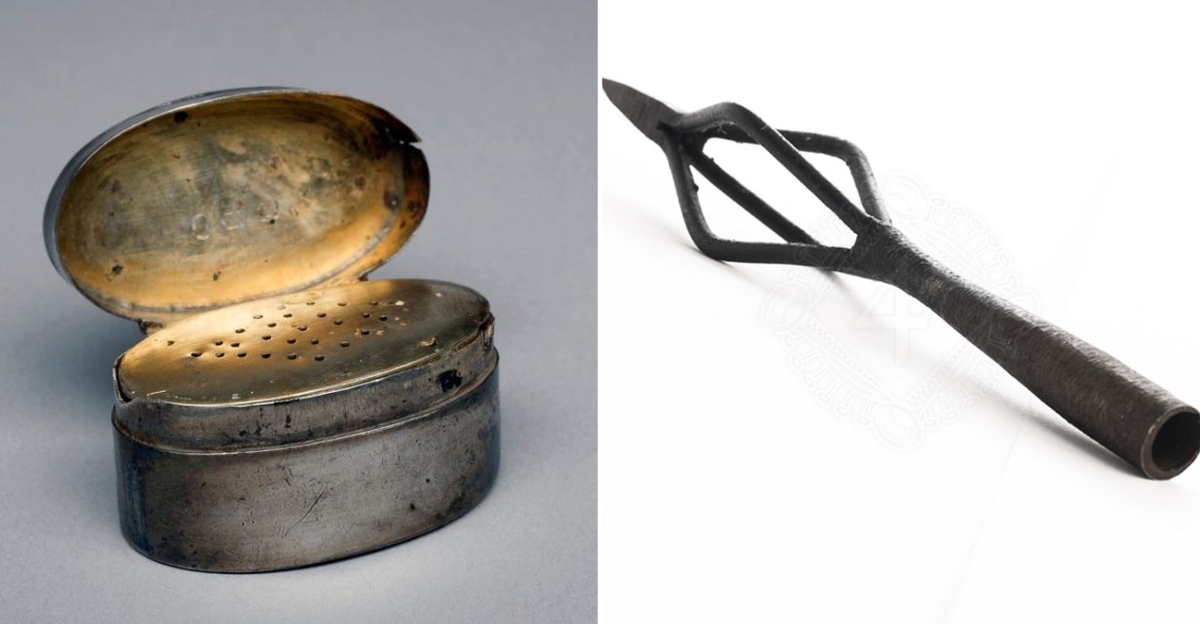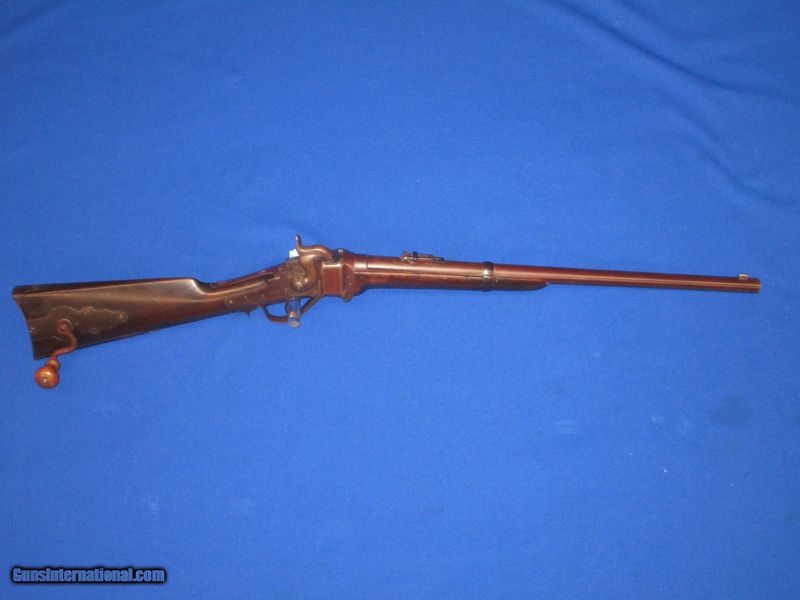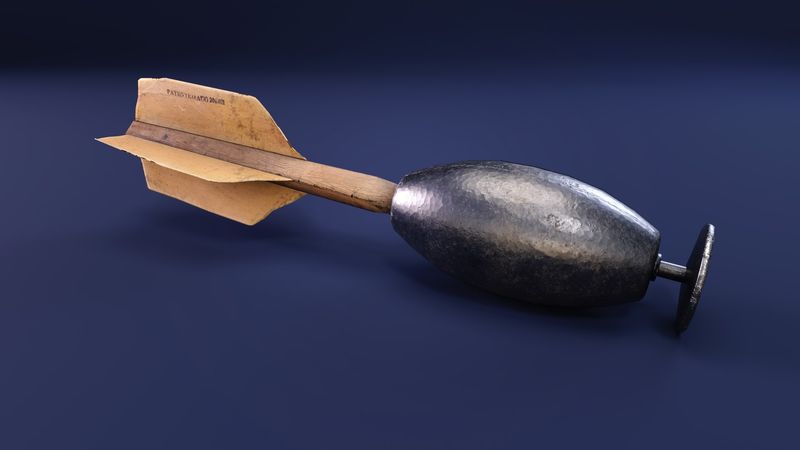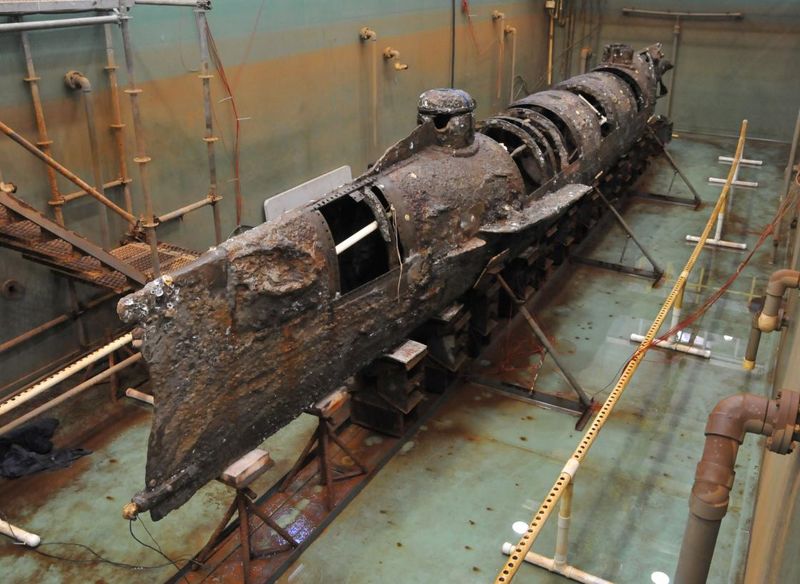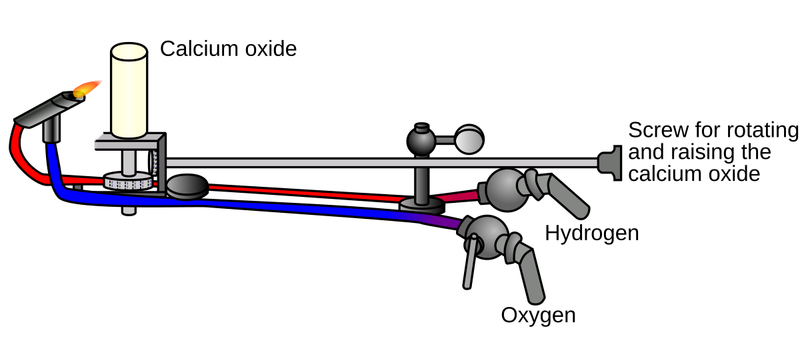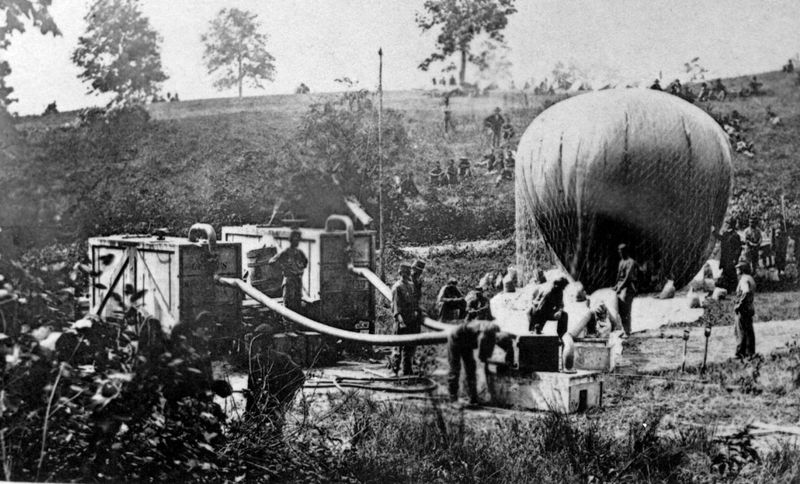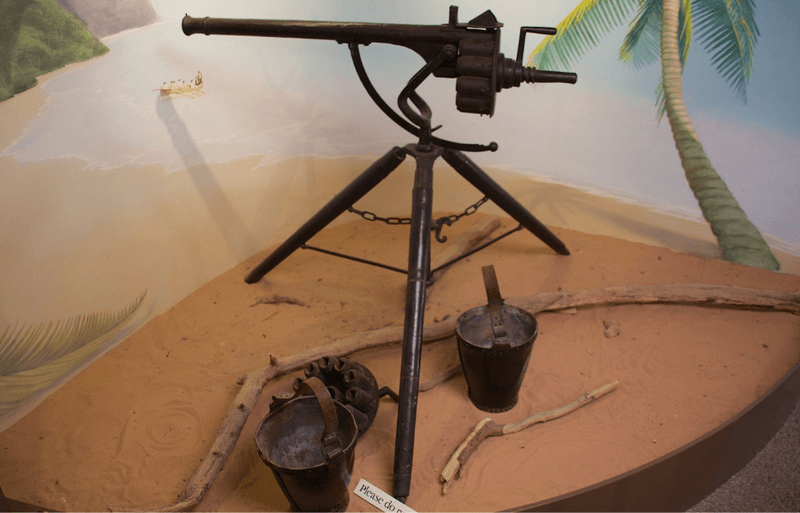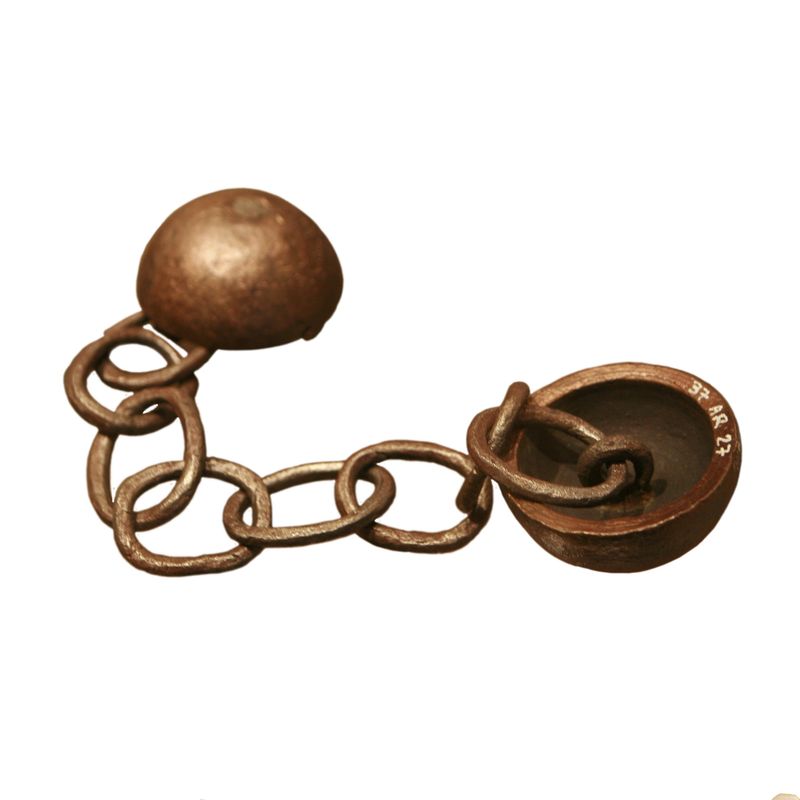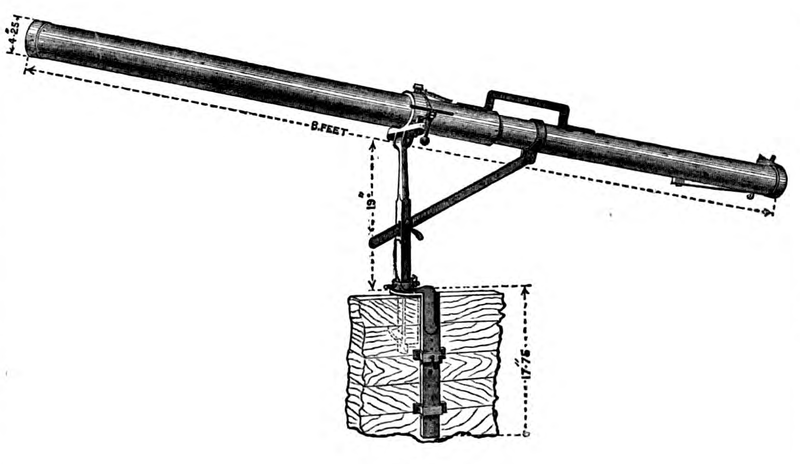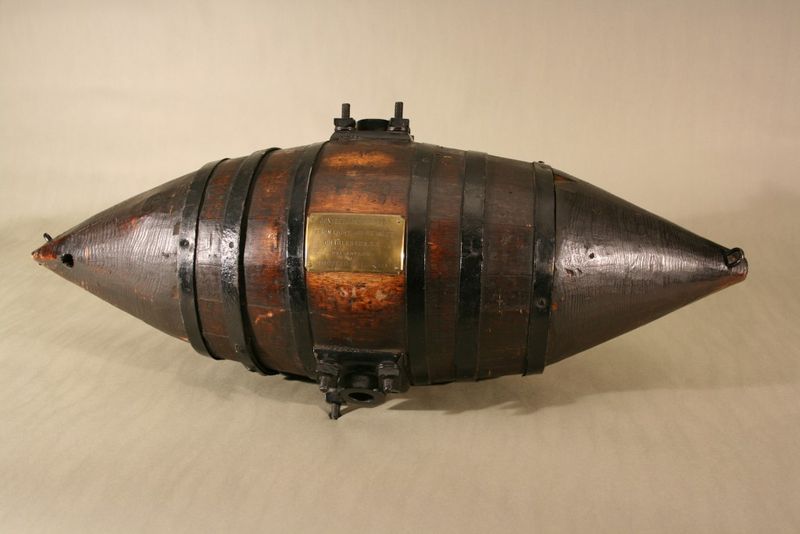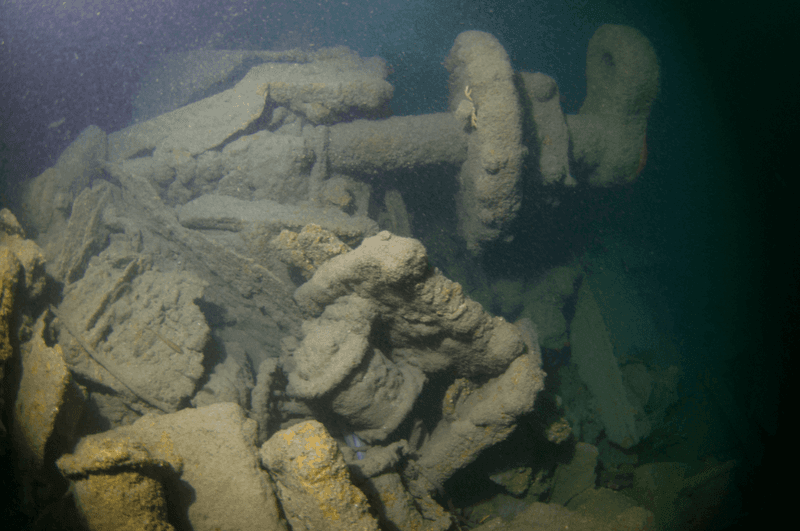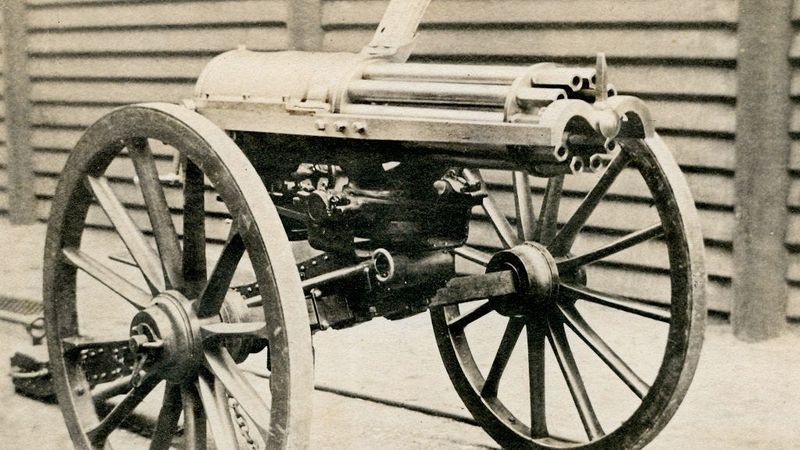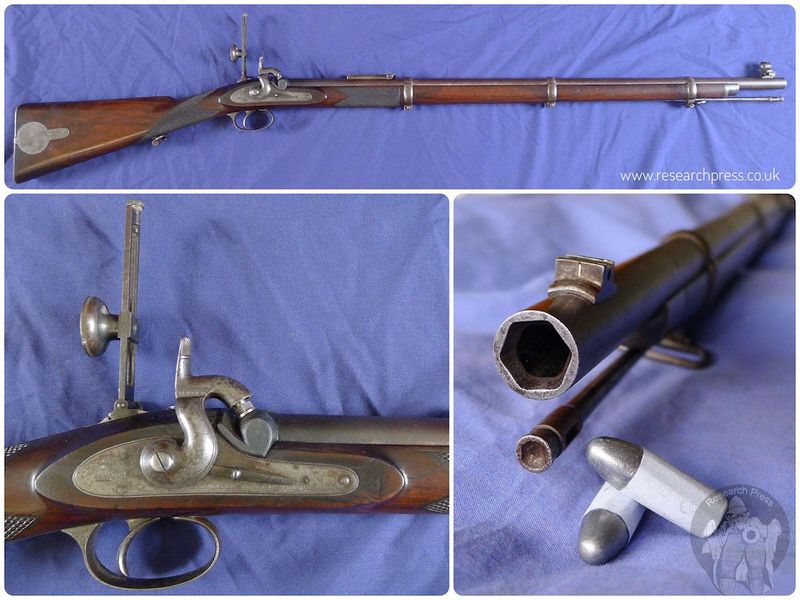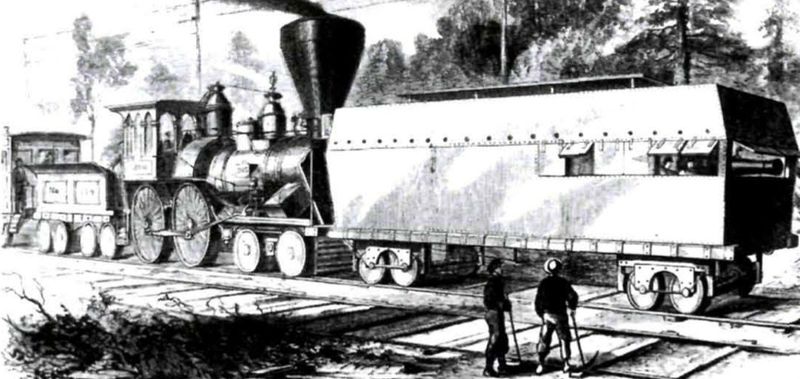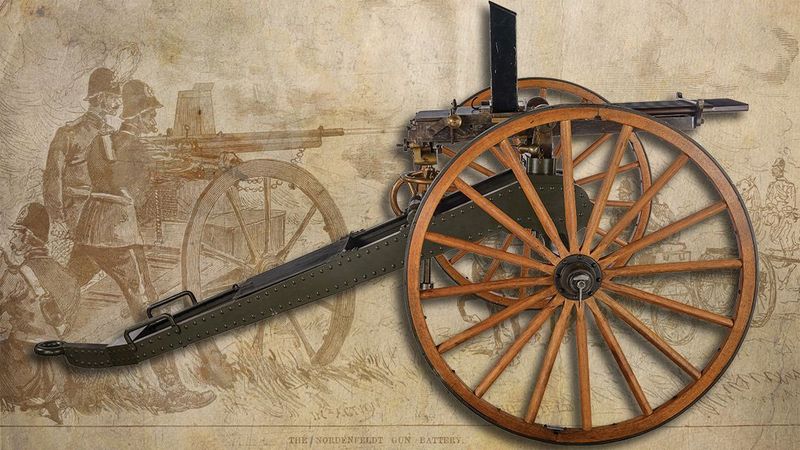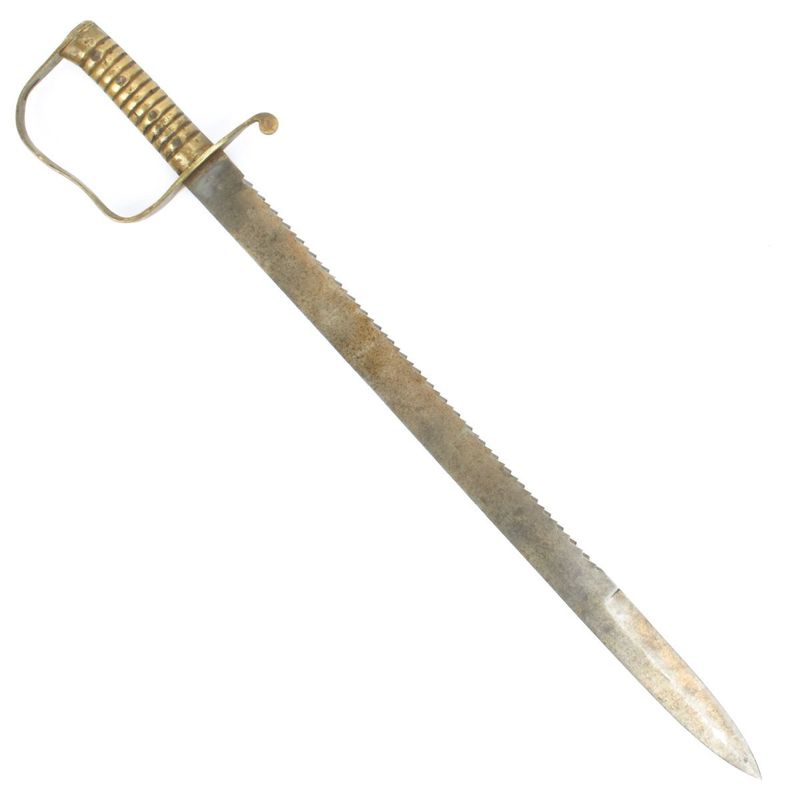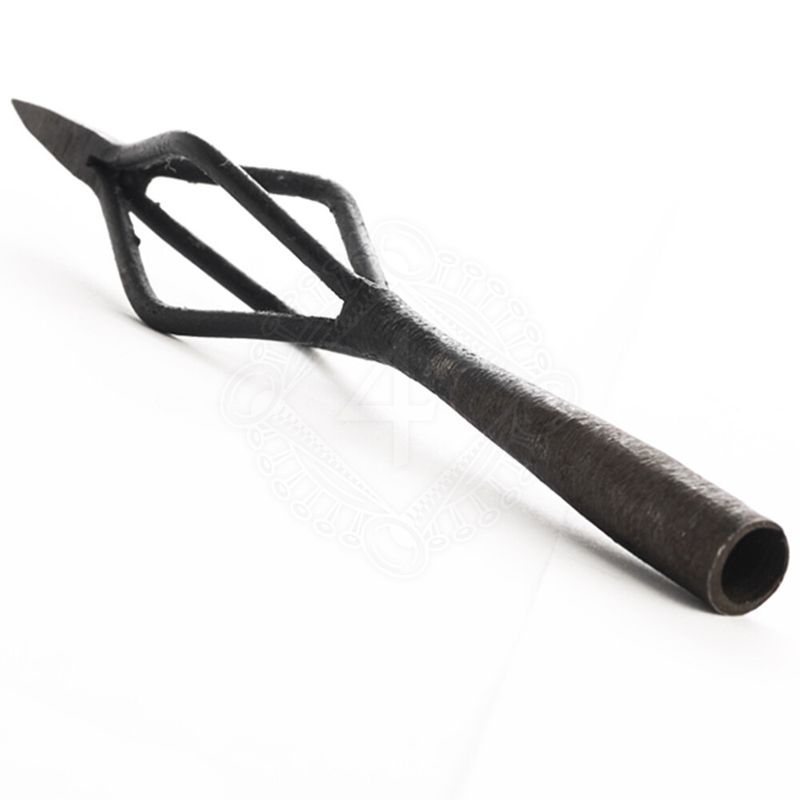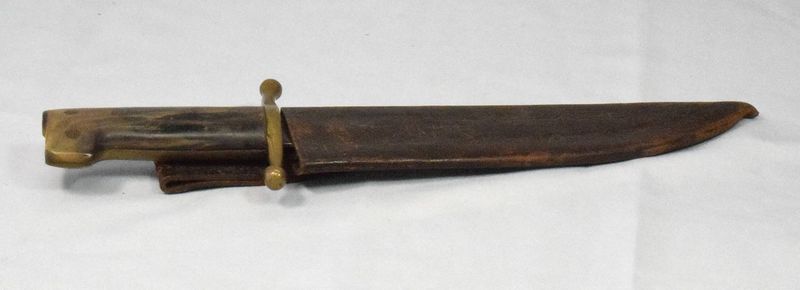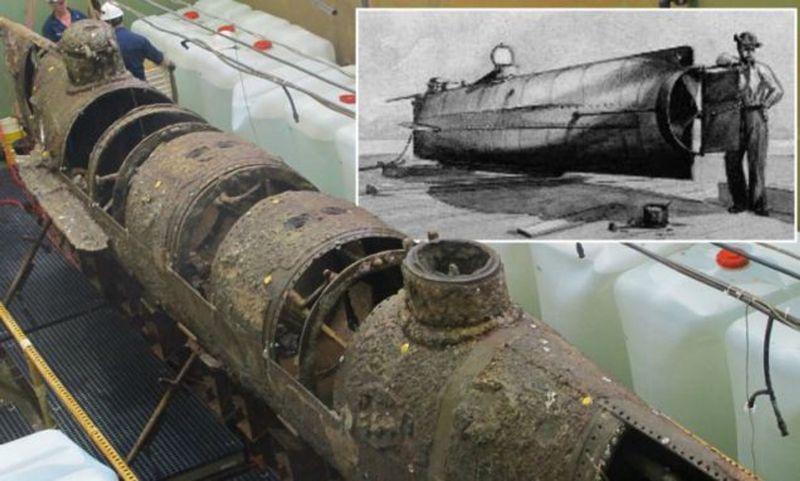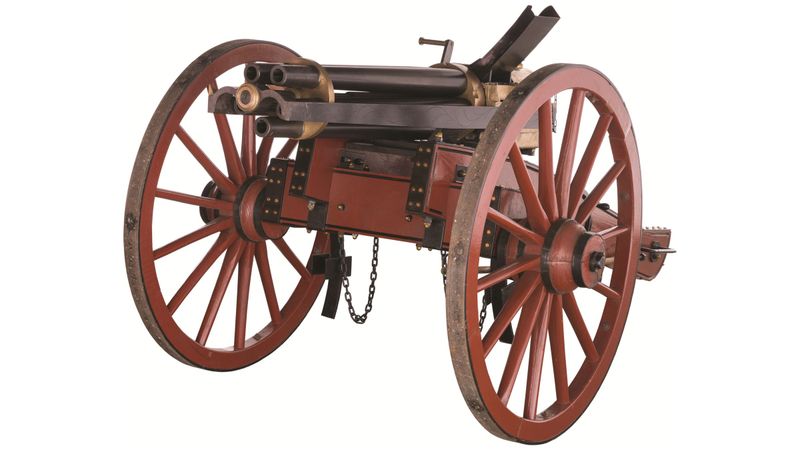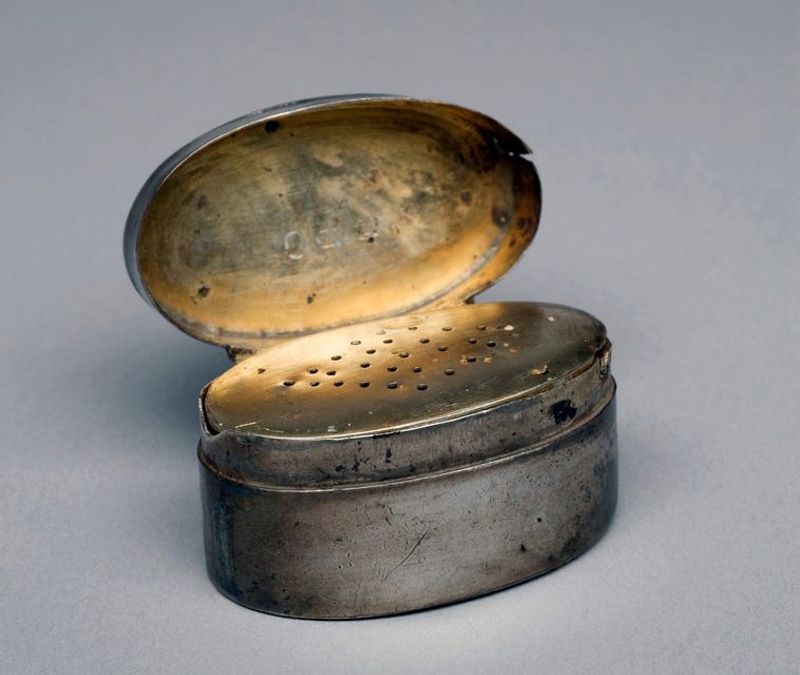The American Civil War was not just a pivotal moment in history, but also a time of incredible innovation and bizarre weaponry.
From hand-cranked machine guns to incendiary arrows, the war saw an array of strange and inventive weapons that seemed more at home in a steampunk novel than on a battlefield.
This blog explores 21 peculiar weapons that were actually used during the Civil War, each with its unique story and impact. Join us on a journey through history as we uncover the creativity and desperation that led to these unusual instruments of war.
1. The Coffee Mill Gun
Imagine a coffee grinder, not for your morning brew, but for bullets. The Coffee Mill Gun was an early hand-cranked machine gun. It was designed to rapidly fire bullets in a manner reminiscent of grinding coffee beans.
This ingenious, albeit cumbersome, device was intended to unleash a hail of lead upon advancing troops. While it promised high fire rates, its reliability in the chaos of war was questionable.
Soldiers had to crank it manually, adding a physical element to its operation. Despite its innovative design, it saw limited use, overshadowed by more effective weapons.
2. Ketchum Grenade
Shaped like a football, the Ketchum Grenade was as peculiar as it was dangerous. Designed to explode upon impact, it had to land nose-first to detonate properly. Throwing it was an art; soldiers needed precision and a good arm.
The grenade’s design included fins to stabilize its flight, much like an arrow. However, its effectiveness was hit or miss, literally.
Often, it would fail to detonate, leaving soldiers scrambling to avoid a potentially explosive dud. This unreliable weapon was a testament to the experimental nature of Civil War armaments.
3. The Hunley Submarine
The Hunley, a Confederate submarine, was a marvel of naval engineering. This hand-cranked sub was the first to sink an enemy ship, the USS Housatonic. Unfortunately, it also sank itself in the process.
The Hunley’s design was innovative, featuring a long, narrow hull and a spar torpedo. Its cramped interior required a crew to manually turn a crankshaft for propulsion.
Despite its tragic end, the Hunley marked a significant point in naval warfare, showcasing the potential for underwater combat. Its story is a haunting reminder of the bravery and risk in pioneering technology.
4. Calcium Floodlights
In the shadowy theatres of night battles, Union forces employed calcium floodlights to blind and disorient Confederate troops. These powerful lights used a chemical reaction involving lime and magnesium to produce intense illumination.
They created a stark, eerie glow that turned night into day. The psychological impact on enemy forces was profound, as it disrupted their movements and exposed their positions.
The floodlights represented a leap in tactical warfare, using light as a weapon. Though not widely used, they demonstrated the ingenuity and resourcefulness of Union strategists.
5. Balloon Corps
The Balloon Corps was the eyes in the sky for the Union army. These hot air balloons provided crucial aerial reconnaissance, offering a bird’s-eye view of enemy movements.
Floating gracefully above the chaos of battle, they allowed commanders to make informed strategic decisions. Equipped with telegraphs, observers could relay real-time information to ground forces.
The balloons were vulnerable to enemy fire and weather conditions, but their ability to gather intelligence was unmatched. The Balloon Corps marked the dawn of aerial surveillance, a practice that continues to evolve in modern warfare.
6. Puckle Gun
The Puckle Gun was a quirky blend of cannon and machine gun. Operated by a hand crank, this early type of repeating firearm could fire multiple shots without needing to reload between each one.
Its design consisted of a large, rotating cylinder with pre-loaded chambers. Though its potential was promising, it was rarely used in battle due to its complex mechanism and cumbersome size.
The Puckle Gun serves as an example of the innovative yet impractical weapons that emerged during the Civil War, foreshadowing future developments in automatic weaponry.
7. Chain Shot
Imagine two cannonballs connected by a length of chain, designed to wreak havoc on enemy lines. Chain shot was originally intended for naval battles, to tear through the masts and rigging of ships.
However, its use on land was equally devastating, as it could slice through troop formations with brutal efficiency.
The spinning projectiles created a terrifying spectacle, sowing chaos and fear. Its effectiveness relied on precise timing and targeting, making it a formidable yet unpredictable weapon. Chain shot exemplified the brutal ingenuity of Civil War artillery tactics.
8. Hale Rocket Launcher
The Hale Rocket Launcher was a daring attempt to introduce spin-stabilized rocketry to Civil War battlefields. Unlike earlier rockets, it used a spiral design to stabilize its flight.
Unfortunately, this innovation did not translate to accuracy, as the rockets often missed their targets. Their unpredictability made them a risky choice for commanders.
Despite these challenges, the Hale Rocket Launcher represented an important step in the evolution of military rocketry. It illustrated the persistent quest for technological advancement, even when faced with practical limitations.
9. Land Mines (“Torpedoes”)
Known as torpedoes during the Civil War, these early land mines were rudimentary yet deadly. Hidden beneath the surface, they were triggered by pressure, exploding with devastating force.
Their use marked a shift in defensive tactics, introducing an element of unseen danger. Soldiers had to tread carefully, wary of every step. While primitive by today’s standards, these mines were a precursor to modern IEDs.
Their deployment in key areas could halt enemy advances and create psychological barriers, showcasing the evolving nature of warfare during this tumultuous period.
10. Underwater Mines
Underwater mines, controlled by wires from shore, represented a leap in naval defense technology during the Civil War. These explosive devices were strategically placed to destroy enemy ships attempting to breach harbors or river defenses.
The ability to detonate them remotely added a new dimension to naval warfare, allowing defenders to time their attacks with precision.
Their presence beneath the waves created a hidden threat that forced enemy vessels to proceed with caution. This innovation highlighted the increasing complexity of naval strategies and the ongoing quest for technological superiority.
11. Gatling Gun
Revolutionizing the battlefield, the Gatling Gun was the grandfather of all machine guns. This hand-cranked marvel could unleash a torrent of bullets, mowing down enemy lines with alarming speed.
Its multiple rotating barrels reduced overheating, allowing sustained fire. The Gatling Gun represented a significant leap in firepower, changing the dynamics of infantry engagements.
Although heavy and cumbersome, it showcased the potential of automatic weaponry. Its introduction marked a turning point in military technology, laying the groundwork for future advancements in rapid-fire guns.
12. Whitworth Rifle
Renowned for its precision, the Whitworth Rifle was a sniper’s dream during the Civil War. With a unique hexagonal bore, it could deliver accurate shots over long distances.
This British-made firearm was both a technological marvel and a symbol of status, available only to elite marksmen. Its accuracy was unmatched, allowing skilled shooters to target officers and key personnel with deadly efficiency.
The Whitworth Rifle highlighted the increasing importance of sharpshooting in warfare, as commanders recognized the value of precision over sheer firepower.
13. Armored Trains
Armored trains were the juggernauts of their time, bringing heavy firepower to rail networks during the Civil War. These mobile fortresses were equipped with cannons and protected by thick metal plating.
They could transport troops and artillery quickly across the battlefield, providing vital support in key engagements. The sight of an armored train thundering down the tracks was both intimidating and strategic.
This innovation underscored the growing role of railroads in military logistics and the adaptation of technology to meet the demands of modern warfare.
14. Multi-Barrel Volley Guns
Multi-barrel volley guns were a precursor to modern machine guns, offering rapid-fire capabilities without the need for reloading. Each pull of the trigger could unleash a barrage of bullets, devastating enemy ranks.
These guns were designed with multiple barrels arranged in a fan-like formation, allowing simultaneous discharge. Their innovation lay in the ability to concentrate firepower, though they lacked the sustained fire of later machine guns.
While not widely adopted, they represented a step towards greater firepower and the evolution of automatic weaponry in military history.
15. Sawback Swords
A brutal twist on traditional blades, sawback swords featured serrated edges designed to inflict maximum damage. These weapons were not just for cutting but for sawing through flesh and bone.
Used primarily as bayonets, they added a psychological edge to the horrors of close combat. Their jagged design made extraction from wounds difficult and painful.
Sawback swords exemplified the ruthless efficiency sought by soldiers in battle, combining intimidation with lethality. Though controversial, their use highlighted the brutal realities of warfare, where every advantage was pursued relentlessly.
16. Incendiary Arrows
Incendiary arrows brought a touch of medieval warfare to the Civil War. These flaming projectiles were designed to ignite enemy structures and sow panic. Archers would prepare them by wrapping flammable materials around the arrowheads, lighting them before release.
While visually striking, their effectiveness was mixed. Weather conditions and accuracy greatly affected their impact.
Despite their limitations, incendiary arrows offered a psychological edge, as the threat of fire could disrupt enemy morale and tactics. They highlighted the blend of old and new technologies employed during this complex conflict.
17. Terry’s Texas Rangers’ Bowie Knife Pistols
A unique hybrid of blade and firearm, the Bowie Knife Pistol was a testament to the ingenuity of Terry’s Texas Rangers. These oversized knives featured a pistol barrel, allowing for both close combat and ranged attacks.
Their intimidating appearance belied practical limitations, as accuracy and power were compromised by the dual design. Despite this, they symbolized the resourcefulness and adaptability of Confederate troops.
The Bowie Knife Pistol served as a reminder of the diverse weaponry employed in the Civil War, where creativity often met necessity on the battlefield.
18. Hand-Cranked Propeller Submarines
Silent and stealthy, hand-cranked propeller submarines offered a glimpse into the future of naval warfare. These vessels relied on manual power, with crew members turning cranks to propel them through the water.
Their design allowed for covert operations, able to approach enemy ships undetected. However, their limited range and speed restricted their tactical use.
Despite these constraints, they marked an important step in submarine development, demonstrating the potential of underwater combat. The ingenuity of these submarines lay in their simplicity and the dedication of those who manned them.
19. Revolving Cannon
The revolving cannon was a precursor to rapid-fire artillery, featuring a mechanism that rotated barrels for continuous firing. This design allowed for a higher rate of fire compared to traditional cannons.
It functioned by cycling through pre-loaded chambers, maintaining pressure on advancing enemies. Although its complexity limited widespread use, it represented a significant innovation in artillery technology.
The revolving cannon highlighted the ongoing evolution of firepower, foreshadowing future developments in automatic weaponry and the relentless pursuit of greater battlefield effectiveness.
20. Stink Bombs
In an attempt to flush out entrenched enemy troops, stink bombs were employed as an unconventional weapon during the Civil War. These chemical devices released noxious fumes, creating an unbearable environment for soldiers in bunkers or trenches.
The offensive odor forced troops to abandon their positions, allowing attackers to advance. While the effectiveness of stink bombs varied, they illustrated the willingness to experiment with non-lethal methods of warfare.
This creative approach to combat emphasized psychological tactics, exploiting human senses to gain a strategic advantage on the battlefield.
21. Hollowed-Out Cannonballs
Hollowed-out cannonballs added a deadly twist to traditional artillery. These projectiles were designed to carry explosive or incendiary payloads, detonating upon impact or after a set time.
This innovation allowed for greater versatility in artillery attacks, capable of delivering destruction both on impact and with delayed explosions. Gunners had to carefully time their shots, adding complexity to their strategy.
Hollowed-out cannonballs represented a significant advancement in artillery technology, enhancing the destructive potential of cannons and challenging enemy defenses with new tactical considerations.
